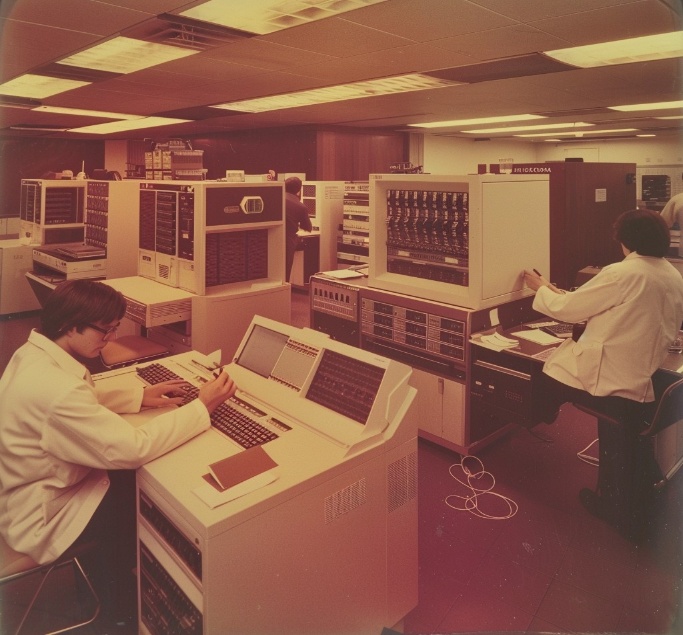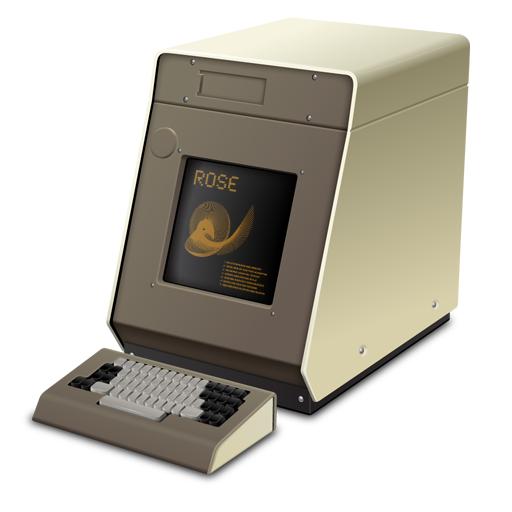1974 – The History of the First DOS Attack
The year 1974 was interesting in many ways. Here are a few events as examples:
- India conducted a successful nuclear weapon test, becoming the sixth country to do so.
- The OPEC ended the oil embargo introduced in 1973.
- Early in the year, U.S. President Richard Nixon met with Soviet Union General Secretary Leonid Brezhnev to negotiate the reduction of strategic nuclear weapons. However, a few months later, Nixon was forced to resign due to the Watergate scandal, and by the end of the year Gerald Ford, as the new U.S. President met with Brezhnev to continue the negotiations.
- The Terracotta Army was discovered in China at the burial site of Qin Shi Huang (259–210 BC), founder of the Qin dynasty and unifier of China.
- Hungary, Czechoslovakia, and Yugoslavia agreed on constructing the Friendship Oil Pipeline.
- The 10th FIFA World Cup took place in West Germany, where the host nation won for the second time after their 1954 triumph. This World Cup also introduced the trophy still in use today replacing the previous Jules Rimet Cup, which was permanently awarded to Brazil in 1970 after their third win, although it was stolen in 1983 and has never recovered.
- In Ethiopia, Emperor Haile Selassie was overthrown by a Marxist-Leninist military organization, ending a dynasty that had begun in 1270.
- Ernő Rubik invented the Rubik’s Cube.
- The world’s first role-playing game, ”Dungeons & Dragons”, was published.
- ABBA‘s song ”Waterloo” won the Eurovision Song Contest.
- Several celebrities were also born this year, including:
- Singers Melanie Chisholm (Sporty Spice), Victoria Adams (Posh Spice), Robbie Williams, and Alanis Morissette.
- Actors Christian Bale, Olivia Colman, Elizabeth Banks, Penelope Cruz, Joaquin Phoenix, and Leonardo DiCaprio.
- Hungarian athlete Henrietta Ónodi, swimmer Krisztina Egerszegi, and chess master Zsófia Polgár.
In addition to all these, 1974 can also be considered the year of the first Denial of Service (DoS) attack

The story has its roots in the final years of World War II. In 1944, the U.S. passed a law1 to support the reintegration of veterans returning from war into society, which included free college education for them. By the early 1950s, this led to a significant increase in the number of students in higher education, causing challenges first of all due to the shortage of educators secondly because the returning veterans were older, many of them had families or war injuries. Thus new education methods were needed. Educators began seeking ways to automate parts of education, inspired by industrial automation’s impact on productivity.
Simultaneously, from 1946 based on the ideas and under the guidance of John von Neumann, engineers at Princeton’s Institute for Advanced Studies (IAS) were working on a new computing device the IAS machine. They succeeded in 1952, made the plans public, which led to the creation of further computers worldwide. One such computer was the Indian TIFRAC (Tata Institute of Fundamental Research Automatic Calculator), that supported nuclear research and contributed to India’s above mentioned 1974 successful nuclear bomb test.
This is where the University of Illinois comes into the story, as it had a lot of cooperation with the army during the World War. At the army’s request, they started building computers – immediately two of them – based on the IAS Machine’s designs.
- One was ORDVAC (Ordnance Discrete Variable Automatic Computer), whose main task was to calculate ammunition. After being tested at the university, it was disassembled and transported to an Air Force base, where it was reassembled, which in itself was an engineering – and logistical feat at that time).
- The other, ILLIAC (Illinois Automatic Computer), remained at the university and supported education and scientific research.
What is also interesting about these two machines is that while the other IAS machine- based computers were all unique, with their own instruction set, these two machines used the same instruction set, meaning they can be considered software compatible.
In 1957, the Soviet Union launched Sputnik, the first artificial satellite, shocking the U.S. government. Feeling technologically behind, the U.S. increased funding for science and engineering education.
The University of Illinois was also trying to improve its educational capabilities. Being at the forefront of computer technology, in 1959 they formed a research group of educational planners, physicists, engineers, psychologists, and mathematicians to develop a computer-assisted educational system. Many great minds discussed and planned for many weeks, but in the end they could not agree on a solution. At that time, the head of the research group mentioned the problem to a lab assistant, Donald Bitzer2, who, after some thought, came up with a proposal for implementation.

In 1960, a new project was founded based on Bitzer’s suggestion and soon PLATO3 (Programmed Logic for Automatic Teaching Operations ) was developed, which made the use of ILLIAC easier by making it programmable using a TV screen and a special keyboard. PLATO and its subsequent developments led to several technological innovations. Some of these include:
- PLATO I was a single-user computer
- PLATO II (1961) two users could work in parallel using time-sharing methods.
- In PLATO III (1969), the programming language TUTOR was introduced, which allowed anyone to create new educational materials and manage up to 20 terminals simultaneously.
- PLATO IV (1972) featured innovations like
- a practical plasma display (the foundation of which was laid by the Hungarian scientist Kálmán Tihanyi4),
- a special touch panel for entering answers in educational programs,
- a voice synthesizer and
- a hard drive, which was used, for example, in music education to store audio files.
PLATO IV was developed and run on a new mainframe, not the ILIAC, and could handle up to 1000 simultaneous users. This is also why it became widespread and inspired many developments:
- For example, an application called PLATO Notes (by David R. Woolley in 1973) was created that allowed users to create their own chat groups. This later led to the development of Lotus Notes5.
- Several video games were written inspired by the success of the Dungeons & Dragons role-playing game. These provided the basis for the development of later games such as Doom and World of Warcraft, and they became so popular that after a while the availability of the games had to be restricted so as not to take away resources from those who wanted to use the system for learning.
- Additional applications have also been developed to support the university’s strong music education program.
Now we arrive at 1974

A 13-year-old student, David Dennis6, who frequently played PLATO IV games and previously had several conflicts with operators supervising terminals, overheard music school students talking about a new command in TUTOR, ‘external’, which allowed sending signals to external devices (printers, tape drives, oscilloscopes). He also heard that when this command was used on a terminal without such external devices connected to them, they would freeze and have to be restarted. This upset the operators, as the plasma display could hardly handle the power fluctuations. Dennis also discovered that although this command had previously been available only to music school students, it had been made available to everyone in the fall of ’74.
Hearing and seeing all these, Dennis wrote a little program that sent ‘ext’ commands to other terminals near his terminal. Those terminals of course stopped. Dennis watched with gloating as the operators were at a loss, and since there was no authentication or logging at that time, he didn’t get caught.
Later he tried his program with other terminals he knew at other locations and the method worked there as well, as evidenced by user entries in the PLATO user group in Notes indicating that terminals were down.
Finally, some lessons learned

- There are many driving forces behind technological progress. War and the pursuit of wealth will always be among them.
- The energy invested in education and the development of education will pay off (sooner or later).
- Each new technology can inspire new uses and new development directions, leading to previously unimaginable things.
Something similar is happening now with AI. More than 70 years of scientific research and technological development have made widely usable AI-based systems easily accessible to everyone. The generations now growing up will use these as a skill, and their thinking will be based on them. This will give rise to new needs and new ideas, leading to currently unimaginable developments in the future. - Any technology can be used for both good or bad purposes, which is why there will always be a need for professionals who deal with the security aspects of technology usage.
- The G.I. Bill, formally the Servicemen’s Readjustment Act of 1944
- https://computerhistory.org/profile/don-bitzer/
- https://grainger.illinois.edu/news/magazine/plato
- https://www.sztnh.gov.hu/en/hungarian-inventors-and-inventions/kalman-tihanyi
- https://www.stellarinfo.com/blog/complete-history-ibm-lotus-notes-hcl-notes/
- http://www.platohistory.org/blog/2010/02/perhaps-the-first-denial-of-service-attack.html



